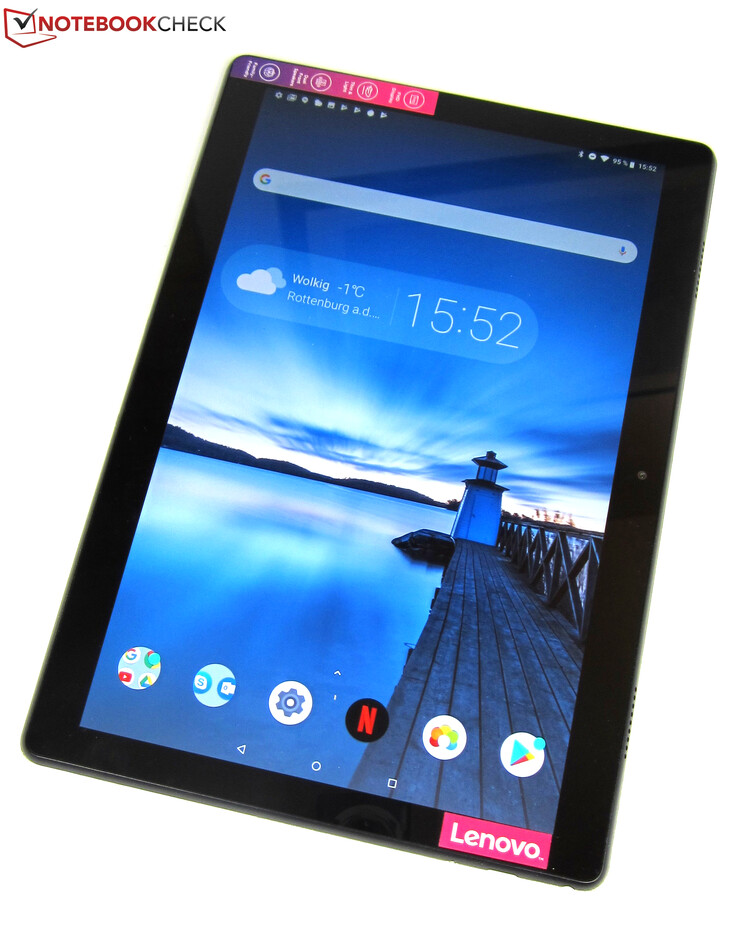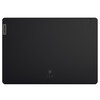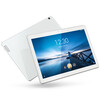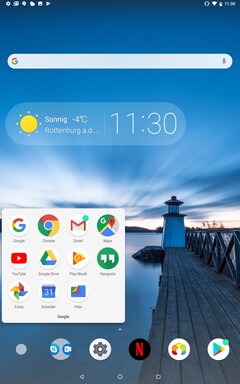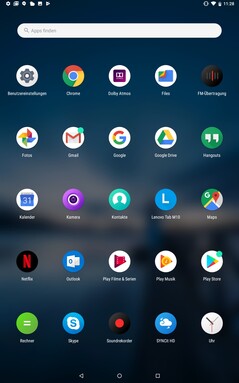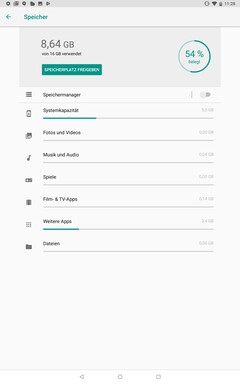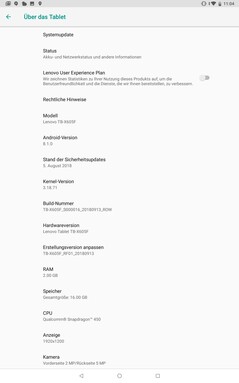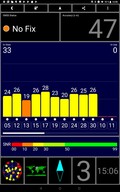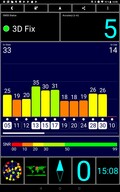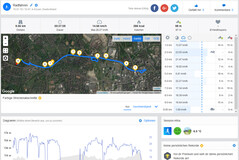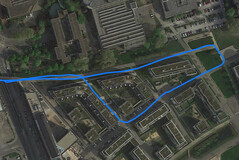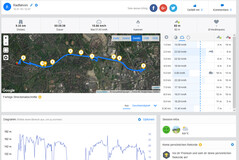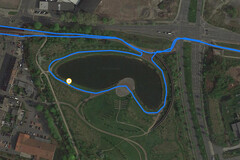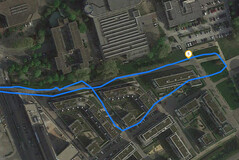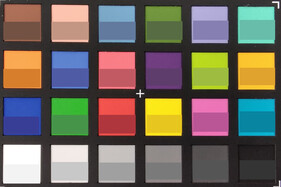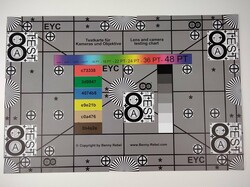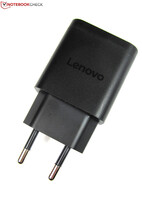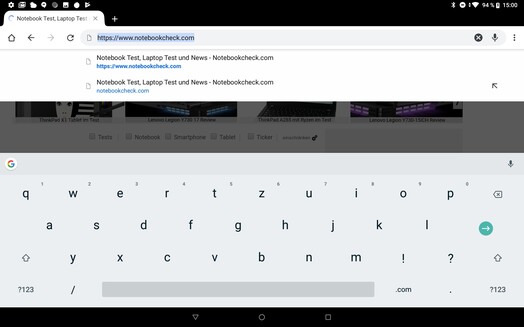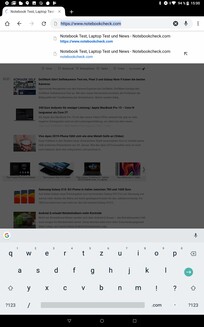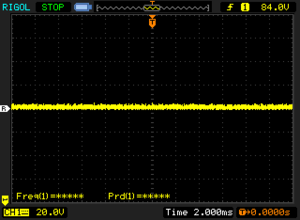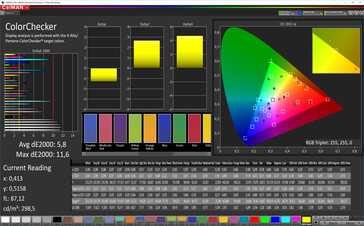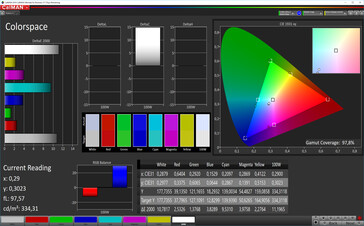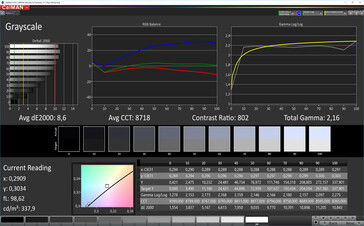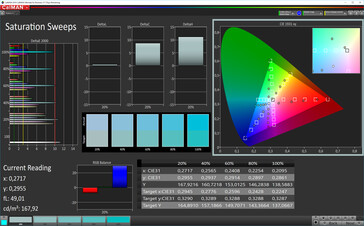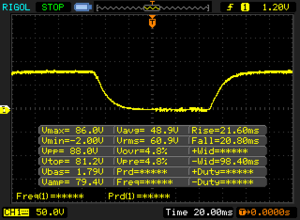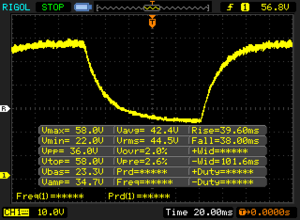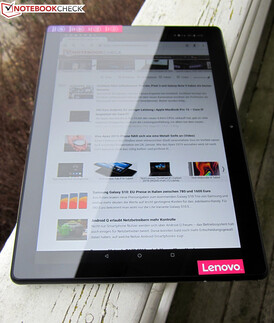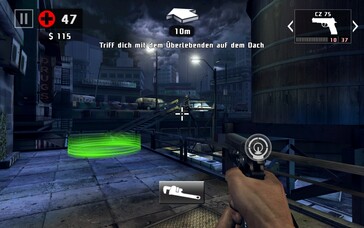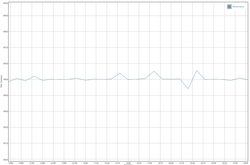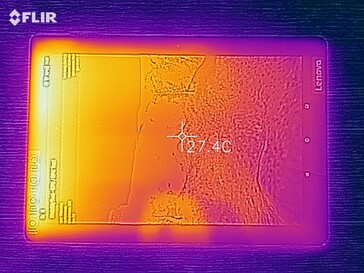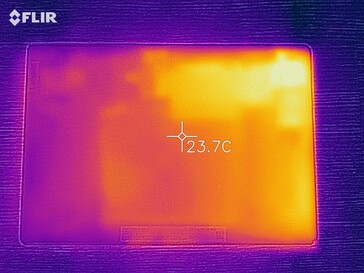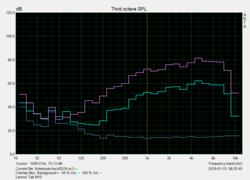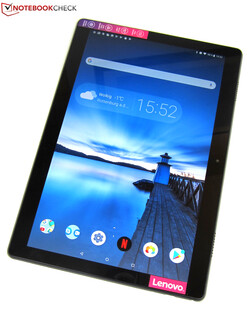Lenovo Tab M10 Tablet Review
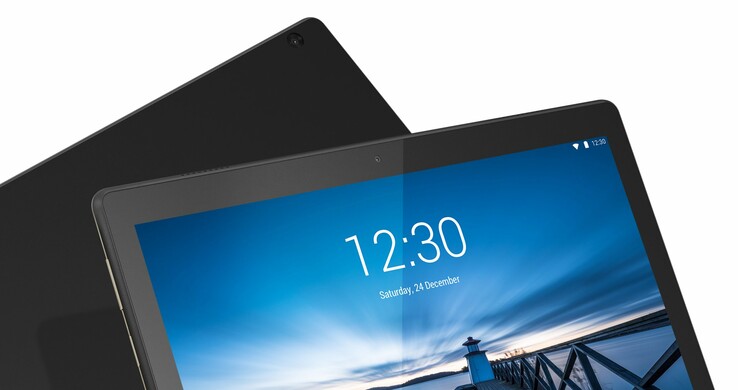
The Tab series is Lenovo’s budget tablet line. The company tries to differentiate the Tab series from its competitors by marketing them as being family friendly yet sharply designed and with decent speakers. We have already reviewed the Tab P10, and now it is time to put its cheaper sibling, the Tab M10, through its paces. It is worth keeping in mind that the devices get more expensive as the model numbers descend the alphabet; the Tab P10 costs around $100 more than the Tab M10, for example. The cheapest model in the series is the Tab E10, which is followed by the Tab M10 and then the Tab P10.
Lenovo has equipped the Tab M10 with a Qualcomm Snapdragon 450 SoC, 2 GB of RAM, 16 GB of internal storage and stereo speakers that support Dolby Atmos. The company also includes a switchable children's mode that provides child-friendly content. Moreover, Lenovo sells a Tab M10 Kids Bumper shock-resistant rubber cover that has an integrated screen protector to protect your tablet from being knocked around.
We have chosen to compare the Tab M10 against other comparably priced midrange tablets. Our comparison devices include the Acer Iconia Tab 10, the Amazon Fire HD 10 (2017), the Chuwi Hi9 Plus, the Huawei MediaPad T5 and the Samsung Galaxy Tab A 10.5. We will also be considering the Tab M10 against its more expensive sibling, the Tab P10.
Case
The Tab M10 has a plastic case, which feels good in the hand thanks to its rubberized surface. The finish also helps prevent the tablet from slipping off a table or out of our hands. There is also a slight gap between the plastic case and the metal frame, which also provides a little additional grip.
Lenovo sells the M10 in Slate Black or Polar White with our test unit being the former. Our test device is well made and weighs 480 g (~1.06 lb), which makes it portable enough to sling in a backpack without feeling as if you are being weighed down. The Tab M10 is not as robust as the Tab P10 though. The 8.1 mm (~0.32 in) thick, plastic case, is easy to twist and we can easily make the display deform by applying pressure to either the case or the screen.
It is worth keeping in mind that the Tab P10 is around 1.1 mm (~0.04 in) slimmer than the M10 and is approximately 40 g (~1.4 oz) lighter.
Connectivity
Lenovo has equipped the Tab M10 with up to 3 GB LPDDR3 RAM and 32 GB of storage. However, we could only find the cheaper version in the UK Lenovo online store at the time of writing, which has 2 GB of RAM and 16 GB of internal storage, but is otherwise identical to its more expensive counterpart.
Our test unit had 7.4 GB free of its 16 GB internal storage upon delivery. Thankfully, the M10 supports up to 256 GB microSD cards that you can format as internal storage and on which you can store apps or data.
Lenovo has equipped the Tab M10 with a USB Type-C port, which is rare for such a cheap device. The port operates on the USB 2.0 standard, which is considerably slower than the USB 3.1 standard that more expensive devices utilise. The Tab M10 also has an FM tuner and a headphone jack, neither of which are guaranteed with devices that have been released in the last eighteen months. The tablet has only 2 speakers though compared to the four in the Tab P10. The Tab M10 also lacks a fingerprint sensor and an LTE modem, which are both reserved for the Tab P10.
Lenovo also sells its Lenovo Smart Dock, which turns the Tab M10 into a smart speaker with Amazon Alexa integration. The tablet connects to the dock via pogo pins and acts as a quasi Amazon Echo Show.
Unfortunately, Lenovo does not sell the Smart Dock separately at the time of writing, but only bundles it with the Tab M10 in a package that it markets as the Smart Tab M10. Interestingly, the Smart Tab bundle costs the same as buying the tablet on its own.
Software
The Tab M10 comes with Android 8.1 Oreo at the time of writing, while Lenovo had only updated our test device to 5 August 2018 Android security patches. The patches were around 4/5 months outdated during our tests, which is disappointing. We also had the same experience with the Tab P10.
The UI is close to the stock Android including opening the app drawer by swiping up from the bottom of the screen. Lenovo includes an option in Settings to disable the app drawer too, which then distributes app icons on your home screens as iOS does.
Lenovo has replaced some Google applications with its own, such as the contacts and camera apps just as it has done with the Tab P10. The company has also opted to pre-install Google Files instead of its long maintained in-house file manager. Our test unit also has third-party apps pre-installed such as Microsoft Outlook, Netflix, Skype and SyncIt HD, the latter of which is a proprietary backup software. We could uninstall some of the pre-installed apps, but we had no such luck with the Netflix app, which could only be deactivated within Settings.
Please see our Tab P10 review for a more detailed overview of the additional software that Lenovo includes on its Tab series devices.
Communication & GPS
The Tab M10 supports all modern Wi-Fi standards up to IEEE 802.11 ac and can connect to 2.4 GHz or 5 GHz networks. Our test unit performed slightly worse than the Tab P10 in our iperf3 Client Wi-Fi tests. Our test device achieved 3% slower transfer speeds in the receive test, but 13% slower speeds than the Tab P10 in the transmission test.
The Tab M10 performed well against our other comparison devices in the transmission test, in which it finished second and 13% faster than the Chuwi Hi9 Plus in third place. By contrast, our test device finished second bottom in the receive test and almost 30% behind the Acer Iconia Tab. The Tab M10 regularly dropped to below 100 MBit/s in this test though, which is worth keeping in mind as you may experience unexpected drops in Wi-Fi speeds when using the device.
Our test unit quickly finds a satellite fix with up to 5 metres (~16 ft) accuracy when we tested it outside. Predictably, the GPS accuracy drops considerably inside, but at least it manages to maintain a sat fix, which not all devices can.
We also subjected the Tab M10 to a bike ride to test its location accuracy against our reference navigation system, the Garmin Edge 500. Our test device performed well over the 9.30 km (~5.8 mi) bike ride that the Garmin recorded us having cycled, but it did deviate by 240 metres (~262 yd), which is more than the Tab P10 did. However, the tablet did a decent job considering its price, but it generally plotted more jagged routes than the Garmin did. Overall, the Tab M10 is accurate enough for general navigation tasks, although its size may prevent most people from using it for navigating somewhere.
Cameras
The Tab M10 has a 5 MP rear-facing camera and a 2 MP front-facing sensor. By contrast, Lenovo has equipped its Tab P10 with an 8 MP rear-facing sensor and a 5 MP front-facing camera.
The 5 MP rear-facing camera in the Tab M10 supports autofocus, and it can record in up to 1080p at 25 FPS. The front-facing camera can record in the same quality too but at 30 FPS.
The default camera app has several settings including candlelight, landscape, sports and snow modes. There are also various filters and manual settings for ISO and white balance. Lenovo also includes HDR support and a panorama mode, although the latter only works when HDR is disabled.
The Tab M10 takes passable photos, but they are snapshot quality at best. The rear-facing camera struggles to capture details in large areas of colour, which you can see by looking at the t-shirt that the toy rabbit is wearing in Scene 1. Moreover, objects look overly sharpened to our eyes, which also makes Scene 2 look artificial. The camera also takes dreadful photos in low-light conditions. Scene 3 is hopelessly underexposed to the point where we can hardly make out our toy rabbit.
The front-facing camera is no better either. The 2 MP sensor takes blurry looking pictures that are dominated by image noise. Neither camera takes decent videos either, although the front-facing camera does a better job than the 5 MP rear-facing sensor as it can record at higher framerates.
We also subjected the rear-facing camera to more tests under controlled lighting conditions during which we analyse its ability to reproduce colours accurately and how well it photographs our test chart. The Tab M10 reproduces colours vividly, although they look too artificial for our liking.
The Tab M10 captured our test chart sharply, but this is a double-edged sword. The aggressive sharpening makes our chart look overly jarring, although it maintains contrast levels across the image better than the Tab P10 did.
Accessories & Warranty
The Tab M10 comes with a 5 V/2 A charger, a Type-C to Type-A USB cable, a SIM tool, and a user manual. Lenovo includes one year’s manufacturer’s warranty too.
The company also sells two cases for the Tab M10. The cheaper of the two is the Tab M10 Folio Case and Film, which costs £27.99 (~$36.97), while there is also a Tab M10 Kids Bumper that Lenovo sells for £31.99 (~$42.25). Both cases come with screen protectors and have integrated stands. Of the two, the Kids case should offer more protection against drops. Lenovo has also designed a Smart Dock, which we discussed in the Connectivity section of the review. Currently, Lenovo only sells the Tab M10 with the Smart Dock included on its UK website. Please see our Guarantees, Return policies and Warranties article for country-specific information.
Input Devices & Operation
Lenovo has pre-installed Google GBoard as the default keyboard on the Tab M10, which functions just as well as it does on other devices that we have tested. The touchscreen worked well during our tests, and it is easy to perform gestures on the glass display. Moreover, the hardware buttons worked without issue, and the accelerometer adjusted the screen orientation quickly.
However, our test unit occasionally crashed when we had several user accounts open simultaneously. The Tab M10 also lacks a fingerprint sensor, as we mentioned earlier in this review. You can still secure each profile with a PIN, password and pattern.
Display
The Tab M10 has a 10.1-inch IPS display that operates natively at 1,920x1,200 in a 16:10 aspect ratio. The screen has a 224 PPI pixel density, which is much lower than the displays in modern smartphones, but is on par with comparable tablets and the Tab P10.
Our test unit achieved an average maximum brightness of 327 cd/m², according to X-Rite i1Pro 2 and 339 cd/m² at the centre of the display, which is darker than all but the Iconia Tab 10 and the Hi9 Plus of our comparison devices. Moreover, the Tab P10 gets over 50% brighter than the Tab M10, although the latter has a slightly more evenly lit display.
Lenovo does not include any colour profiles or white balance options to adjust the colour temperature, so you must be satisfied with using the device at default settings. Our test unit has an underwhelming black value and contrast ratio. The 0.42 cd/m² black value is the same as the Tab P10, but the Tab M10 has a disappointingly low 807:1 contrast ratio, which is nearly 60% lower than the Tab P10 and only beats the MediaPad T5 in our comparison table.
| |||||||||||||||||||||||||
Brightness Distribution: 86 %
Center on Battery: 339 cd/m²
Contrast: 807:1 (Black: 0.42 cd/m²)
ΔE ColorChecker Calman: 5.8 | ∀{0.5-29.43 Ø4.77}
ΔE Greyscale Calman: 8.6 | ∀{0.09-98 Ø5}
97.8% sRGB (Calman 2D)
Gamma: 2.16
CCT: 8718 K
| Lenovo Tab M10 IPS, 1920x1200, 10.1" | Acer Iconia Tab 10 A3-A50 IPS, 1920x1200, 10.1" | Amazon Fire HD 10 2017 IPS, 1920x1200, 10.1" | Chuwi Hi9 Plus IPS, 2560x1600, 10.8" | Huawei MediaPad T5 10 IPS, 1920x1200, 10.1" | Lenovo Tab P10 IPS, 1920x1200, 10.1" | Samsung Galaxy Tab A 10.5 SM-T590N IPS, 1920x1200, 10.5" | |
|---|---|---|---|---|---|---|---|
| Screen | -4% | 25% | 10% | 22% | 17% | 50% | |
| Brightness middle (cd/m²) | 339 | 340 0% | 426 26% | 308 -9% | 356 5% | 522 54% | 556 64% |
| Brightness (cd/m²) | 327 | 320 -2% | 399 22% | 297 -9% | 340 4% | 495 51% | 514 57% |
| Brightness Distribution (%) | 86 | 84 -2% | 91 6% | 92 7% | 92 7% | 84 -2% | 87 1% |
| Black Level * (cd/m²) | 0.42 | 0.19 55% | 0.38 10% | 0.29 31% | 0.5 -19% | 0.41 2% | 0.42 -0% |
| Contrast (:1) | 807 | 1789 122% | 1121 39% | 1062 32% | 712 -12% | 1273 58% | 1324 64% |
| Colorchecker dE 2000 * | 5.8 | 15 -159% | 4.5 22% | 6.2 -7% | 2.3 60% | 6.7 -16% | 1.8 69% |
| Colorchecker dE 2000 max. * | 11.6 | 22.8 -97% | 7.9 32% | 10.5 9% | 6.5 44% | 12.2 -5% | 3.2 72% |
| Greyscale dE 2000 * | 8.6 | 4 53% | 5.2 40% | 6.6 23% | 1.4 84% | 9.1 -6% | 2.2 74% |
| Gamma | 2.16 102% | 2.09 105% | 2.23 99% | 2.19 100% | 2.16 102% | 2.14 103% | 2.26 97% |
| CCT | 8718 75% | 6940 94% | 6875 95% | 8216 79% | 6565 99% | 9417 69% | 6819 95% |
* ... smaller is better
Screen Flickering / PWM (Pulse-Width Modulation)
| Screen flickering / PWM not detected | |||
In comparison: 53 % of all tested devices do not use PWM to dim the display. If PWM was detected, an average of 8088 (minimum: 5 - maximum: 343500) Hz was measured. | |||
We also subjected our test unit to further tests with a spectrophotometer and CalMAN analysis software, which highlight the shortcomings of its screen. The display has comparatively high DeltaE deviations and a colour temperature that is around 2,200 K higher than it ideally should be. The high colour temperature makes colours look too cool for our liking, which is also something that we observed with the Tab P10.
Display Response Times
| ↔ Response Time Black to White | ||
|---|---|---|
| 42.4 ms ... rise ↗ and fall ↘ combined | ↗ 21.6 ms rise | |
| ↘ 20.8 ms fall | ||
| The screen shows slow response rates in our tests and will be unsatisfactory for gamers. In comparison, all tested devices range from 0.1 (minimum) to 240 (maximum) ms. » 98 % of all devices are better. This means that the measured response time is worse than the average of all tested devices (20.2 ms). | ||
| ↔ Response Time 50% Grey to 80% Grey | ||
| 77.6 ms ... rise ↗ and fall ↘ combined | ↗ 39.6 ms rise | |
| ↘ 38 ms fall | ||
| The screen shows slow response rates in our tests and will be unsatisfactory for gamers. In comparison, all tested devices range from 0.165 (minimum) to 636 (maximum) ms. » 99 % of all devices are better. This means that the measured response time is worse than the average of all tested devices (31.6 ms). | ||
The Tab M10 is difficult to use outdoors because of its low maximum brightness and its weak contrast ratio. The screen is readable on an overcast day or when using the tablet in the shade. However, reflections will quickly overwhelm the display on a sunny day or when under direct sunlight.
Our test device has good viewing angles thanks to its IPS display. We noticed that brightness dropped off at acute viewing angles, but there were no colour or image distortions. Hence, you should be able to use the Tab M10 from almost any angle, although reflections may make the screen difficult to read.
Performance
The Tab M10 is powered by the Qualcomm Snapdragon 450 SoC, which is now over 18 months old and is currently the company’s entry-level SoC. Incidentally, Lenovo equips its Tab P10 with the same SoC. The Tab M10 generally scores the same as its sibling, although it occasionally opens up a 5% lead over the Tab P10 in benchmarks such as Geekbench.
The Tab M10 generally finished in the midfield of our comparison tables behind the Hi9 Plus and the Amazon Fire HD 10 (2017), although it finished second bottom in the two AnTuTu benchmarks that we ran.
| AnTuTu v7 - Total Score | |
| Chuwi Hi9 Plus | |
| Huawei MediaPad T5 10 | |
| Amazon Fire HD 10 2017 | |
| Lenovo Tab P10 | |
| Lenovo Tab M10 | |
| Samsung Galaxy Tab A 10.5 SM-T590N | |
| Average Qualcomm Snapdragon 450 (56497 - 73468, n=11) | |
The Tab M10 also performed well in browser benchmarks, but it is consistently beaten by the Iconia Tab 10 and the Fire HD 10 (2017). Our test unit generally finished within 2% of the Tab P10.
Subjectively, our test device browses the web smoothly, but it struggles with complex HTML websites such as Let’s play OUIGO. The pinball game is noticeably jerky on the Tab M10, and it is not an enjoyable experience.
| JetStream 1.1 - Total Score | |
| Acer Iconia Tab 10 A3-A50 (Browser: Chrome Version 63) | |
| Amazon Fire HD 10 2017 (Amazon Silk 61.2) | |
| Chuwi Hi9 Plus (Google Chrome 70) | |
| Huawei MediaPad T5 10 (Chrome 67) | |
| Average Qualcomm Snapdragon 450 (22 - 22.7, n=13) | |
| Lenovo Tab P10 (Chrome 71) | |
| Lenovo Tab M10 (Chrome 71.0.3578.99) | |
| Samsung Galaxy Tab A 10.5 SM-T590N (Chrome 69.0.3497.100) | |
| Octane V2 - Total Score | |
| Average of class Tablet (763 - 138481, n=94, last 2 years) | |
| Acer Iconia Tab 10 A3-A50 (Browser: Chrome Version 63) | |
| Amazon Fire HD 10 2017 (Amazon Silk 61.2) | |
| Chuwi Hi9 Plus (Chrome 70) | |
| Huawei MediaPad T5 10 (Chrome 67) | |
| Samsung Galaxy Tab A 10.5 SM-T590N (Chrome 69.0.3497.100) | |
| Lenovo Tab P10 (Chrome 71) | |
| Lenovo Tab M10 (Chrome 71.0.3578.99) | |
| Average Qualcomm Snapdragon 450 (3470 - 4115, n=14) | |
| Mozilla Kraken 1.1 - Total | |
| Samsung Galaxy Tab A 10.5 SM-T590N (Chrome 69.0.3497.100) | |
| Average Qualcomm Snapdragon 450 (11012 - 11863, n=14) | |
| Lenovo Tab M10 (Chrome 71.0.3578.99) | |
| Lenovo Tab P10 (Chrome 71) | |
| Huawei MediaPad T5 10 (Chrome 67) | |
| Chuwi Hi9 Plus (Chrome 70) | |
| Amazon Fire HD 10 2017 (Amazon Silk 61.2) | |
| Acer Iconia Tab 10 A3-A50 (Browser: Chrome Version 63) | |
| Average of class Tablet (243 - 27101, n=79, last 2 years) | |
| WebXPRT 3 - Overall | |
| Average of class Tablet (39 - 480, n=24, last 2 years) | |
| Huawei MediaPad T5 10 (Chrome 67) | |
| Lenovo Tab M10 (Chrome 71.0.3578.99) | |
| Samsung Galaxy Tab A 10.5 SM-T590N (Chrome 69.0.3497.100) | |
| Average Qualcomm Snapdragon 450 (28 - 34, n=8) | |
| WebXPRT 2015 - Overall | |
| Amazon Fire HD 10 2017 (Amazon Silk 61.2) | |
| Huawei MediaPad T5 10 (Chrome 67) | |
| Lenovo Tab P10 (Chrome 71) | |
| Lenovo Tab M10 (Chrome 71.0.3578.99) | |
| Samsung Galaxy Tab A 10.5 SM-T590N (Chrome 69.0.3497.100) | |
| Average Qualcomm Snapdragon 450 (90 - 103, n=7) | |
* ... smaller is better
The 16 GB of eMMC flash storage performed poorly in AndroBench 3-5, particularly in the sequential write test. Its random read speed is respectable though. It is worth keeping in mind that Lenovo has equipped the Tab P10 with a much faster storage that consistently outperformed the Tab M10 in our tests.
The company has equipped the Tab M10 with a comparably fast microSD card reader though. Our test device averaged 83.48 MB/s in the sequential read test and 61.22 MB/s in the sequential write test, which put it on par with the Tab P10. However, both sets of transfer speeds are well short of the Toshiba Exceria Pro M501’s theoretical maximum speeds. None of our comparison devices achieve these potential speeds though, so the Tab M10 is in good company here.
| Lenovo Tab M10 | Acer Iconia Tab 10 A3-A50 | Amazon Fire HD 10 2017 | Chuwi Hi9 Plus | Huawei MediaPad T5 10 | Lenovo Tab P10 | Samsung Galaxy Tab A 10.5 SM-T590N | Average 16 GB eMMC Flash | Average of class Tablet | |
|---|---|---|---|---|---|---|---|---|---|
| AndroBench 3-5 | -12% | 4% | -7% | 118% | 56% | 25% | -35% | 1429% | |
| Sequential Read 256KB (MB/s) | 279.9 | 173.7 -38% | 262.2 -6% | 145 -48% | 312.2 12% | 276.7 -1% | 285.6 2% | 164.5 ? -41% | 1786 ? 538% |
| Sequential Write 256KB (MB/s) | 52.6 | 92.4 76% | 147.7 181% | 132.5 152% | 83.8 59% | 205.7 291% | 103.3 96% | 43 ? -18% | 1337 ? 2442% |
| Random Read 4KB (MB/s) | 52.5 | 13.7 -74% | 27.72 -47% | 42.2 -20% | 76.7 46% | 53.9 3% | 71.1 35% | 21.7 ? -59% | 246 ? 369% |
| Random Write 4KB (MB/s) | 11.32 | 8.77 -23% | 9.37 -17% | 13.01 15% | 76.1 572% | 15.75 39% | 13.39 18% | 8.08 ? -29% | 279 ? 2365% |
| Sequential Read 256KB SDCard (MB/s) | 83.5 ? | 80.4 ? -4% | 55.5 ? -34% | 21.16 -75% | 83.9 ? 0% | 84.3 ? 1% | 80.6 ? -3% | 59.1 ? -29% | |
| Sequential Write 256KB SDCard (MB/s) | 61.2 ? | 56.8 ? -7% | 30.14 ? -51% | 20.44 -67% | 72.5 ? 18% | 61 ? 0% | 60.4 ? -1% | 39.8 ? -35% |
Games
The Snapdragon 450 integrates an Adreno 506 GPU that is powerful enough for simple and older games such as "Dead Trigger 2". The Tab M10 struggles with complex games though and can only play "Asphalt 9: Legends" smoothly at 30 FPS when we set graphics to normal; increasing the graphics to high causes framerates to regularly drop below 10 FPS, which is unplayable.
By contrast, the touchscreen and accelerometer worked well throughout our gaming tests. The stereo speakers delivered decent sound too, although they only achieve a stereo effect when holding the tablet in landscape mode as the speakers sit on the top side of the frame. Hence, holding the Tab M10 in portrait mode puts the speakers only on the side, which ruins the stereo effect.
Dead Trigger 2
Asphalt 9: Legends (Graphics: High)
Asphalt 9: Legends (Graphics: Normal)
Emissions
Temperature
The Tab M10 manages its surface temperatures well and reaches a maximum of 30.7 °C (~87 °F) when idling, but averages a much cooler 26.6 °C (~80 °F). Likewise, our test device averages just 27.3 °C (~81 °F) under sustained load and reaches a comparatively cool 31.8 °C (~89 °F).
We also determined how well the Tab M10 runs under load by subjecting it to a looped GFXBench Battery benchmark. Framerates hardly varied during the 30 loops of the Manhattan benchmark, so you should not experience any thermal throttling in daily use.
(+) The maximum temperature on the upper side is 31.8 °C / 89 F, compared to the average of 33.6 °C / 92 F, ranging from 20.7 to 53.2 °C for the class Tablet.
(+) The bottom heats up to a maximum of 29.4 °C / 85 F, compared to the average of 33.2 °C / 92 F
(+) In idle usage, the average temperature for the upper side is 27.3 °C / 81 F, compared to the device average of 30 °C / 86 F.
Speakers
The Tab M10 has powerful speakers that sound surprisingly balanced. The speakers lack bass, but this is a problem even for large laptops. Lenovo has included Dolby Atmos software too that contains preset profiles for movies and music or a dynamic mode that adjusts the speakers to match the content that you are playing. There are also manual controls for you to tweak the sound to your preferences.
As mentioned in our Games section, the tablet will produce stereo sound only when held in landscape mode as its speakers are on the long side of its frame. The tablet also supports wired audio connections either via the traditional 3.5 mm jack or USB Type-C.
Lenovo Tab M10 audio analysis
(+) | speakers can play relatively loud (88 dB)
Bass 100 - 315 Hz
(-) | nearly no bass - on average 26.5% lower than median
(±) | linearity of bass is average (8.5% delta to prev. frequency)
Mids 400 - 2000 Hz
(+) | balanced mids - only 4.6% away from median
(+) | mids are linear (5.3% delta to prev. frequency)
Highs 2 - 16 kHz
(±) | higher highs - on average 7.5% higher than median
(+) | highs are linear (3.5% delta to prev. frequency)
Overall 100 - 16.000 Hz
(±) | linearity of overall sound is average (20.5% difference to median)
Compared to same class
» 59% of all tested devices in this class were better, 7% similar, 34% worse
» The best had a delta of 7%, average was 20%, worst was 129%
Compared to all devices tested
» 54% of all tested devices were better, 8% similar, 39% worse
» The best had a delta of 4%, average was 24%, worst was 134%
Lenovo Tab P10 audio analysis
(+) | speakers can play relatively loud (87.6 dB)
Bass 100 - 315 Hz
(-) | nearly no bass - on average 24.7% lower than median
(±) | linearity of bass is average (9.7% delta to prev. frequency)
Mids 400 - 2000 Hz
(+) | balanced mids - only 4.4% away from median
(+) | mids are linear (5.9% delta to prev. frequency)
Highs 2 - 16 kHz
(+) | balanced highs - only 3.3% away from median
(+) | highs are linear (5% delta to prev. frequency)
Overall 100 - 16.000 Hz
(±) | linearity of overall sound is average (17.3% difference to median)
Compared to same class
» 44% of all tested devices in this class were better, 4% similar, 52% worse
» The best had a delta of 7%, average was 20%, worst was 129%
Compared to all devices tested
» 31% of all tested devices were better, 8% similar, 60% worse
» The best had a delta of 4%, average was 24%, worst was 134%
Power Management
Power Consumption
The Tab M10 is an energy efficient device whose power consumption is on par with the Tab P10. Our test device consumes a minimum of 0.98 W at idle, which is considerably lower than all our comparison devices except for the Tab P10. Moreover, the Tab M10 averages just 5.87 W under sustained load, which puts the tablet third in our comparison table. Overall, the Tab M10 has comparatively excellent power consumption that just falls short of the Tab P10.
| Off / Standby | |
| Idle | |
| Load |
|
Key:
min: | |
| Lenovo Tab M10 4850 mAh | Acer Iconia Tab 10 A3-A50 6100 mAh | Amazon Fire HD 10 2017 6300 mAh | Chuwi Hi9 Plus 7000 mAh | Huawei MediaPad T5 10 5100 mAh | Lenovo Tab P10 7000 mAh | Samsung Galaxy Tab A 10.5 SM-T590N 7300 mAh | |
|---|---|---|---|---|---|---|---|
| Power Consumption | -81% | -21% | -57% | -96% | 4% | -1% | |
| Idle Minimum * (Watt) | 0.98 | 3.21 -228% | 1.55 -58% | 2.18 -122% | 2.33 -138% | 1.01 -3% | 1.26 -29% |
| Idle Average * (Watt) | 4.45 | 5.97 -34% | 4.17 6% | 5.29 -19% | 8.46 -90% | 4.16 7% | 4.22 5% |
| Idle Maximum * (Watt) | 4.51 | 6.19 -37% | 4.25 6% | 5.37 -19% | 8.49 -88% | 4.17 8% | 4.29 5% |
| Load Average * (Watt) | 5.78 | 9.72 -68% | 7.13 -23% | 8.56 -48% | 11.14 -93% | 5.45 6% | 5.48 5% |
| Load Maximum * (Watt) | 7.18 | 9.97 -39% | 9.63 -34% | 12.86 -79% | 12.3 -71% | 6.9 4% | 6.57 8% |
* ... smaller is better
Battery Life
The Tab M10 has a 4,850 mAh battery, which is much smaller than the batteries in our comparison devices and is over 2,000 mAh smaller than the battery in the Tab P10. Our test device achieved decent runtimes in our battery life at idle and under load tests, in which it finished in the midfield of our comparison table.
However, the tablet delivered disappointing runtimes in our Wi-Fi and looped H.264 video battery life tests. The Tab M10 needed recharging at least five hours sooner than the Tab P10 and the Galaxy Tab A did in both tests, although it did outlast the Fire HD 10 (2017) and the MediaPad T5 by up to an hour.
You should still get a full day’s use from the Tab M10 though. It is worth keeping in mind that the tablet will take almost 3 hours to recharge fully with the included charger.
| Lenovo Tab M10 4850 mAh | Acer Iconia Tab 10 A3-A50 6100 mAh | Amazon Fire HD 10 2017 6300 mAh | Chuwi Hi9 Plus 7000 mAh | Huawei MediaPad T5 10 5100 mAh | Lenovo Tab P10 7000 mAh | Samsung Galaxy Tab A 10.5 SM-T590N 7300 mAh | |
|---|---|---|---|---|---|---|---|
| Battery runtime | -34% | -5% | -18% | 37% | 37% | 59% | |
| Reader / Idle (h) | 21.5 | 12.3 -43% | 16 -26% | 20.7 -4% | 55.5 158% | 21.9 2% | 32.7 52% |
| H.264 (h) | 9.9 | 9.8 -1% | 9.7 -2% | 15.2 54% | 16.1 63% | ||
| WiFi v1.3 (h) | 9.7 | 6.5 -33% | 9 -7% | 10.6 9% | 8.8 -9% | 16.5 70% | 15.6 61% |
| Load (h) | 4 | 2.9 -27% | 4.6 15% | 1.6 -60% | 4 0% | 4.8 20% | 6.4 60% |
Pros
Cons
Verdict
The Lenovo Tab M10 is a decent midrange tablet. The tablet is affordable and has child-friendly features, which should entice some people into buying it. Its Snapdragon 450 SoC is powerful enough for most tasks too, while its stereo speakers are better than most.
The Lenovo Smart Dock is a useful addition too, provided that you buy it bundled with the Tab M10 in your region as you cannot currently buy it separately. The Amazon Alexa functionality allows the tablet to double as a quasi-smart speaker, which gives the Tab M10 added utility.
The Lenovo Tab M10 is a family-friendly tablet that starts at £179.99 (~$237). However, its affordability also comes with compromises such as its dim display and disappointing battery life.
However, the Tab M10 also has its issues. The base model is under-equipped with its 2 GB of RAM and 16 GB of storage. Moreover, its cameras are dreadful, and it has a disappointing battery life compared to the Tab P10. Additionally, its display is too dark for our liking, and it is a shame that Lenovo has not included any colour profiles or white balance options that could rectify the screen’s high colour temperature.
While the Tab M10 gets a recommendation from us, we would suggest considering the Tab P10 over its cheaper sibling. The Tab P10 costs around $100 more than the Tab M10, but you get more RAM, additional storage, double the speakers and a brighter display with a much larger battery. Moreover, the Tab P10 has a fingerprint sensor, better cameras and a more stylish design than the Tab M10. It also has an ambient light sensor that the Tab M10 oddly lacks. In short, the Tab P10 is worth the extra cost if your budget can stretch that far.
Lenovo Tab M10
- 11/05/2019 v7 (old)
Manuel Masiero




